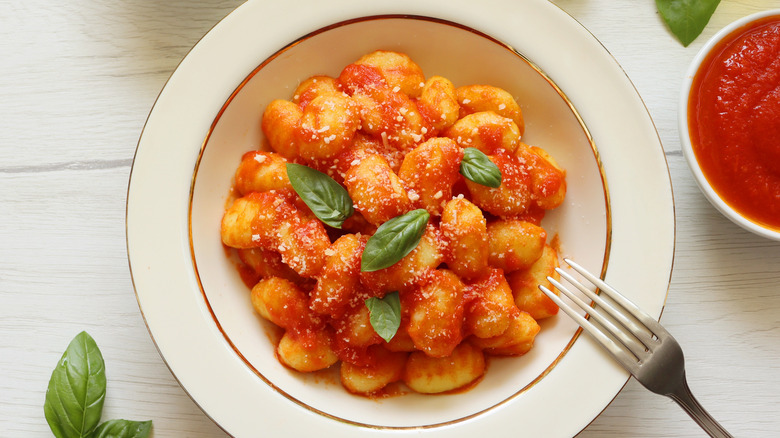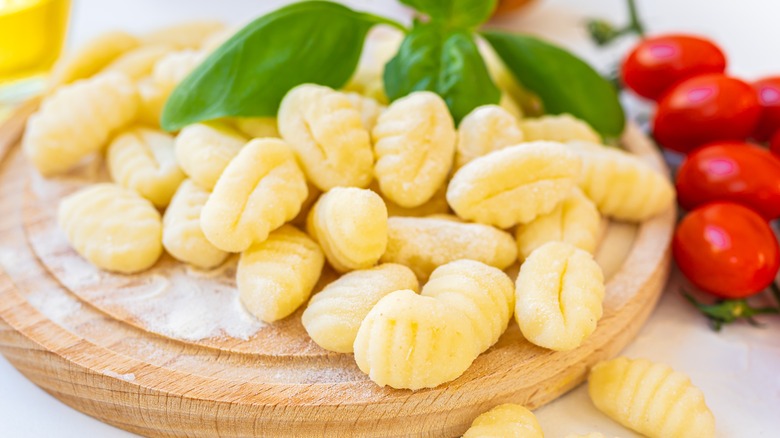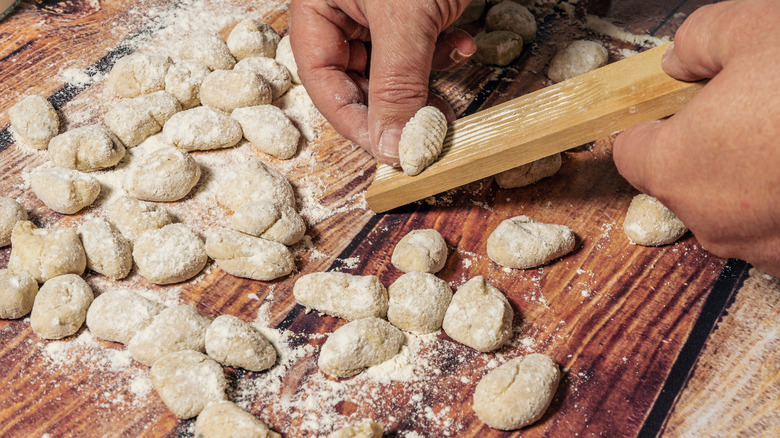Gnocchi's Origins Date Back All The Way To The Italian Renaissance
When you think about the Italian Renaissance, a number of things likely come to mind. Of course, there's the flowing, frilly style of dress that characterized the era, and all the incredible works of art that were created for said fancy-dressed folk to enjoy. (Does the Mona Lisa ring a bell? How about Michelangelo's David?)
However, the Renaissance was instrumental in shaping the modern world, per History. Galileo shocked the world and peeved the Catholic church with his heliocentric model of the universe, and humanism became an emergent school of thought.
But forget science and philosophy. Arguably the most important invention of Renaissance-era Italy was a bite-sized bit of pasta called gnocchi. While Amaro Bistro suggests that a version of the dish may have been introduced much earlier, its more familiar form almost certainly originated in Renaissance Italy. When some scientists were mapping the universe, culinary engineers were crafting delicious doughy dumplings from wide variety of ingredients (via Saveur).
The etymology of gnocchi, an Italian invention
According to Saveur, there are a couple of different Italian terms that may have given gnocchi its name. The name for this petite pasta may be derived from nocca, the Italian word for knuckles, which is a reference to the ridges that give gnocchi its trademark texture, which allows sauce to adhere to the pasta. Alternatively, the word gnocchi could be a variation of knohha, or knot, inspired by the tightly-packed pasta's construction.
The earliest recorded gnocchi recipe can be traced back to Rome in the first century A.D, per the South China Morning Post. It was invented by Marcus Gavius Apicius, and was crafted of a simple flour and water mixture. It was then fried, before being sprinkled with honey and black pepper.
Saveur tells us that the Italian Renaissance gave birth to gnocchi recipes that are more similar to the dish's modern form. In 1570, Renaissance chef Bartolomeo Scappi published a recipe that featured a flour and breadcrumb dough that was extruded through cheese grater holes, thus making the bite-sized pasta nuggets that have come to define gnocchi.
Gnocchi in the modern world
Today, gnocchi is most often associated with being made from potatoes, as is the case in this homemade gnocchi recipe. Gnocchi dough combines potato with flour, which turns soft, pillowy potato into a dough capable of withstanding a boiling pot of water. Saveur explains that the Italian cookbook author Pellegrino Artusi gave us the definitive modern potato gnocchi recipe in the late nineteenth century. His potato pasta was rubbed against the backside of a cheese grater, which gave his gnocchi its nocca ridges.
However, you shouldn't limit yourself to potatoes when crafting gnocchi. This beet and ricotta gnocchi recipe, for example, is a colorful and cheesy play on the classic recipe.
According to the South China Morning Post, the city of Verona, Italy hosts an annual festival called Venerdì Gnocolar, or Gnocchi Friday, on the last Friday before the Lenten season. The holiday began in the early 1500s, when a famine caused the citizenry to riot. The riots were only quelled when flour was doled out to the people. A wealthy man named Tomasso da Vicco, upon his passing, left behind money for the purpose of distributing wine and pasta ingredients to the Veronese every year. This began the tradition of Gnocchi Friday. At the festival, you can scarf down pounds of potato gnocchi, which is given to you by the massive golden fork-wielding Papà del Gnoco.


